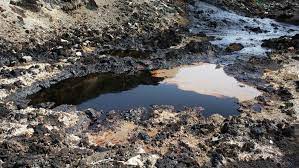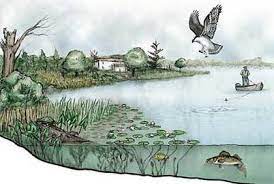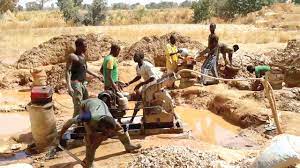Environmental Monitoring and Programme
This article will discuss about the scope of environmental biotechnology, i.e. the various activities that affect the environment where biotechnology has a potential role-play for the achievement of sustainable optimal utilization.
Definition of Environmental Monitoring
Environmental monitoring is the procedure used to ascertain the level of toxins, chemical pollutants, microbial contaminants including parasites, or other harmful substances in the environment or workplace by measuring the amounts of these toxicants, pollutants and pathogens in our surroundings including the bodies of people and animals, water bodies, air, soil and other objects in that environment.
It also includes the measurement of environmental exposure and degree of susceptibility of animal and plant species. All monitoring strategies and programmes aim at establishing the status of an environment or establish trends in environmental parameters.
The design of a monitoring programme must therefore have regard to the final use of the data before monitoring starts. Levels in humans and animals are used as indicators of toxicity of undesirable pollutants and pathogens.

Environmental Monitoring System
This is the system designed for environmental monitoring. The particular system chosen for any environmental monitoring depends on the defined objectives of monitoring, the media of interest and suspected pollutants/contaminants in the environment.
The overall objectives of any environmental monitoring are to describe the state of the environment and identify new issues with a view to forecasting probable future trends.
The specific objectives will be to determine the current state of the environment, assess seasonal threats to the environment and to human health, provide probable inputs for remedial actions and/or monitor progress on actions decided.
The success and effectiveness of an environmental monitoring activity depends on the choice of environmental indicators. Where appropriate indicators were used, the outcome is reliable and the entire exercise is said to be successful.
Where inappropriate indicators were used, however, the outcome is unreliable and the exercise is a failure. The choice of environmental monitoring indicators depends largely on the medium to monitor and the objectives of the exercise.
Read Also : Sources of Waste, Health and Environmental Impact of Waste
For instance, one may want to determine the ‘state of the environment’ in a given water body or air quality in a defined location. The former will require the use of water quality parameters while the latter will demand air quality parameters.
Irrespective of which medium or objective is involved, traditional environmental indicators are physical, chemical, biological and/or socio-economic in nature as shown in the table below.
Table: Outline of Environmental Indicators Appropriate for different Objectives in different Environmental Domains
| Environmental Domain | Monitoring Specific Objective | Environmental Indicators |
| Air | Air quality assessment | Particulate matter (PM2.5, PM10 micrometers), nitrogen dioxide, carbon monoxide, sulphur dioxide, benzene, total suspended particulate, lead, pathogenic air borne microorganisms |
| Atmosphere | Greenhouse gas assessment | Carbon dioxide, methane, nitrous oxide, sulhur hexafluoride, hydrofluorocarbons, perfluorocarbons |
| Ozone layer depletion | Stratospheric ozone | |
| Fresh water | River water quality assessment (RWQA) | Nutrients (nitrates, phosphates, sulphates etc.), metals, acidifying compounds, heavy metals, dissolved oxygen, biological oxygen demand, chemical oxygen demand, organic matter, pathogenic microorganisms especially faecal bacteria, macroinvertebrates especially parasites |
| Lake water quality assessment | Same as RWQA with emphasis on total nitrogen, total phosphorus, transparency, algal biomass | |
| Groundwater quality assessment | Same as RWQA with emphasis on nitrate, bacteria | |
| Sea water/Ocean | Quality assessment | Same as RWQA with emphasis on bacteria concentration |
| Inland water intrusion | Salinity parameters | |
| Natural resource base | Fishing and fish stocks | |
| Land | Biodiversity | Forest cover, deforestation and desertification rates. Number |
| per area of indicator species including indicators of extinction. | ||
| Land use | Status of indicators of land use (arable cropping, mixed cropping, drystock pasture, dairy pasture, tussock grasslands, exotic forestry, native forestry etc.) and land use cover classes e.g. animal husbandry, grazing patterns, urban space, primary and secondary forest covers, vegetation cover etc. | |
| Soil health | Status of physical, chemical and biological soil properties e.g. total carbon content, total nitrogen content, pH, phosphate etc | |
| Erosion risks | Land gradient/slope to enable classification of erosion risk into severe, very severe and extremely severe. | |



